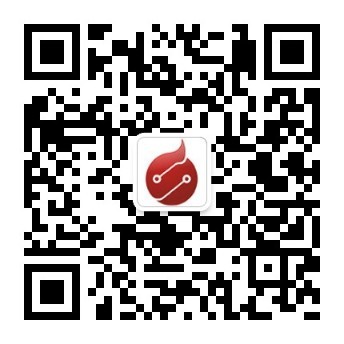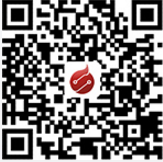Let me talk about the brand first. At present, there are mainly Zhongwei (Nanjing), Huada (Shenzhen), and Swick (Sichuan Video). There are other brands, but the output is not large and the impact is not big. I will skip it here. These several have a certain scale, most of the products produced are stamped and formed at a time, the materials are solid, the accuracy and the strength can be guaranteed. But as the saying goes, people are afraid of being famous for their pigs and they are afraid of being strong. With their fame, counterfeit goods will increase. Taking Zhongwei as an example, at present the counterfeit goods are the same as the real ones from the outer packaging to the appearance of the antenna. It is difficult for outsiders to distinguish them from fake ones. The material is soft, the strength is poor, and it is easy to be deformed after a long time, which greatly affects the reception effect. When people buy, they should still ask experts to judge. The supporting expansion screws of Zhongwei 0.6 and 0.75 appear to be too small. The larger one should be re-selected during installation to strengthen the stability of the bracket. In addition, the old Zhongwei 0.6, 0.75 fixes the antenna and the bracket. The fasteners are straight screws. It is long and easy to slip, but we have been pleased to see that the new Zhongwei has made great improvements at this point, and changed it to screw and nut fastening, which greatly strengthened its bite force. This is actually heard by Nanjing Baiwei Equal opinions of senior fans, we appreciate this kind of obedient attitude. The antennas of Huada are generally made of glass fiber reinforced plastic, and the weight is relatively heavy, so the wind ability is also strong. When installing, pay special attention to the brackets to be fixed firmly.
Let ’s talk about the most important thing—the choice of antenna size, ranging from 0.35 to 1.5 meters, which makes people at a loss. The size of the small pot lid and the large size of the behemoth, how to choose? Then it varies from person to person and from place to place. Some of the heavenly people ’s signals are very strong here, and the other places are very weak. You are like the 166-degree TV (12318V12500). In Fujian, Guangdong ’s coastal area can be said to be the strongest signal, not to mention 0.75, 0.6, 0.45, 0.35 It can be collected very well, and the SHl Shaoyou in Xiamen, Fujian can receive it with a slight modification of the lid. In the vast area north of the Yangtze River, 0.75 is only a little above the threshold. If it is not 0.9, it will not be stable. Reception. The coast of Guangdong, Fujian is the most favorable area for receiving KU hot stars in China. The stars of 76.5, 100.5, 105.5, 110.5, 166, 169 are very stable with 0.6 meters here, and some distributors use 0.6 meters as the basic configuration. For others, it is better to choose more than 0.75 meters. It is worth mentioning that 113 degrees (Palapa, Korean stars) 116 Korean stars and 110 lily sun stars. The previous section of Palapa was lively for a while. In its field, an arc was drawn along the coast. Within the arc (about 115 degrees east longitude), use 0.6, 0.75 antenna. 113, 116 are very strong in the southeast of the northeast. It is very strong, and it can be received by individual transponders 0.35. The signals on Shandong Peninsula and Jiangsu coast are also strong, but most transponder programs require an antenna of more than 0.75 to go down; the 110-degree lily is a very weak star for us. The several analog channel programs on it are still good, which is very helpful to friends who learn Japanese. In Jiangsu, Shanghai, and Zhejiang coastal areas, you can see a shadow with a high frequency head of 0.75 plus 10750, but there must be no noise. With an antenna above 1.2, there is of course an exception. Because the field strength map is an ellipse, the signal is strong in Wenzhou, Zhejiang, and Taiwan, and it can be received well with 0.75. The digital high-definition programs on the star are difficult to receive in most areas of the country. Mr. Yang Jianping has a detailed discussion in the weekly magazine. Similar to the star is the 78.5 Thai star, which has a strong signal in several southwestern provinces and can be received above 0.6, but in other regions, only Wang Xingxing is the only one. In addition, the hotter 146-degree Mabuhai signal is quite strong. I used a 0.45 antenna in Jiangsu to receive it very well, with enough resistance to rain attenuation.
In addition, some friends are keen to use C-band antennas to receive C-band programs. The author recommends using antennas above 0.9 with high-efficiency feeds. In some areas, the C-band is very strong, and 0.75 is acceptable, but it is not a dog after all. Bao, it is better to use 0.9 above.
Suggestion: friends along the coast receive 76.5, 100.5, 105.5, 110.5, 143, 166, 169 and other hot stars, 0.6 is sufficient, 0.45 is also acceptable, after all, small has small benefits, other regions use more than 0.75, of course, if you have enough Backed by the money, there is a large enough place to accommodate it. The larger the antenna, the better. For the big fever, it is another matter. It is a happy thing to get a 1.5-feed polar axis.
The above humble opinion, I hope it can be helpful to friends who already have or are about to have a bias-feed antenna, and please ask experts to correct me.

Follow WeChat
Interesting and informative information and technical dry goods

Download Audiophile APP
Create your own personal electronic circle

Follow the audiophile class
Lock the latest course activities and technical live broadcast
comment
Publish
related suggestion